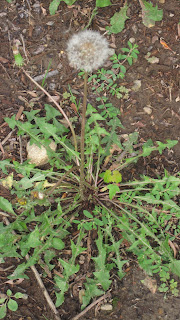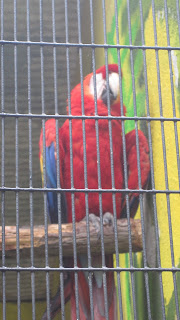Wisdom teeth/ "third molars" found in Humans ( Homo Sapiens)Wisdom teeth no longer have a purpose. They used to be important for our ancestors as they used them to chew their diet of course /tough food.
42.244722,-71.632665
Friday, August 31, 2012
Egan: C3 and either C4 or CAM
Pineapple
Ananas comosus
CAM organism
42.244722,-71.632665
Rice (rice plant)
Oryza Sativa
C3 Organism
42.244722,-71.632665
Egan: Homologus structures
Horses:Equus ferus caballus
Cats:Felis silvestris catus
Bats: Chironax melanocephalus
Whales: Megaptera novaeangliae
The limbs of the listed organisms are homologous structures. Each of the animals' structures was either derived from a common ancestor or indicates a similar evolutionary origin to another. The shown structures do not necessarily preform the same function, but they are indications of a similar ancestral history.
Found at: http://www.google.com/imgres?um=1&hl=en&client=firefox-a&rls=org.mozilla:en-US:official&noj=1&tbm=isch&tbnid=71brQxtknxiBaM:&imgrefurl=http://itc.gsw.edu/faculty/bcarter/histgeol/paleo2/homol1.htm&imgurl=http://itc.gsw.edu/faculty/bcarter/histgeol/paleo2/limbs.jpg&w=1024&h=497&ei=uPRAUKDkA-WY6QGP9IDgAQ&zoom=1&iact=hc&vpx=256&vpy=221&dur=618&hovh=156&hovw=322&tx=126&ty=79&sig=118436280171426898465&page=1&tbnh=80&tbnw=165&start=0&ndsp=18&ved=1t:429,r:1,s:0,i:82&biw=1024&bih=592
March 2002
Egan: Adaptaitons for a specific environment
Domestic Goat
Capra aegagrus hircus
These Goats have 4 chamber stomachs that allow them to eat just about anything. This adaptaion allows them to survive in their mountainous environment becuase they are able to survive by eating things like bark and tough plants. Also, the unbelieveable size of their stomachs allows them to hold up to 10.5 quarts of material in their stomachs, making it easy to go longer without eating. Their stomachs make them well suited to live in their mountainous environments.
42.263272,-71.608987
Capra aegagrus hircus
These Goats have 4 chamber stomachs that allow them to eat just about anything. This adaptaion allows them to survive in their mountainous environment becuase they are able to survive by eating things like bark and tough plants. Also, the unbelieveable size of their stomachs allows them to hold up to 10.5 quarts of material in their stomachs, making it easy to go longer without eating. Their stomachs make them well suited to live in their mountainous environments.
42.263272,-71.608987
Egan: Different Classes of Proteins
Muscle in Humans (homo sapiens)
contains actin and myosin, contractile proteins
42.244658,-71.63258
Hair on humans (homo sapiens)
contains keratin, a structural protein
42.244658,-71.63258
Insulin
Hormonal Protein
42.250218,-71.646634
Egg Yolks
contain ovalbumin, a storage protein
42.244658,-71.63258
Saliva of Humans (homo sapiens)
contains salivary amylase, an enzyme protein
42.244658,-71.63258
Egan: Types of Carbohydrates
Pasta
contains starch, a polysaccharide
42.244658,-71.63258
Sugar
contains sucrose, a disaccharide (composed of fructose and glucose)
42.244658,-71.63258
Milk
contains lactose, a disaccharide (composed of glucose and galactose)
42.244658,-71.63258
Onion
Allium cepa
contains cellulose, a structural polysaccharide
42.244658,-71.63258
Apple
Malus Domestica
contains fructose, a monosaccharide
42.244658,-71.63258
Thursday, August 30, 2012
Wednesday, August 29, 2012
Binici: Mutualism
Madagascar Hissing Cockroach, Gromphadorhina portentosa
Mite, Androlaelaps schaeferi
42.065065,-71.584511
Mite, Androlaelaps schaeferi
42.065065,-71.584511
Although it is hard to see in this picture there is a mite that lives on this cockroach. The mite takes shelter on the cockroach and eats debris from around breathing pores on the body of the cockroach. The mite benefits from this relationship by getting food/shelter, while the cockroach benefits from cleaner breathing pores.
Binici: Endangered Species
Aldabra Tortoise, Geochelone gigantean
42.065065,-71.584511
Blue Throated Macaw, Ara glaucogularis
42.065065,-71.584511
Binici: Plant using wind/water for seed dispersal
Dandelion, Taraxacum officinale
42.241766,-71.623018
When the bloom cycle of the dandelion has reached the end, its lightweight seeds are easily caught by wind and dispered
Binici: Introduced species
Reeve's Muntjac, Muntiacus reevesi
42.065065,-71.584511
The Reeve's Muntjac is now a wild introduced species in England as a result of several accidentally escaping from a zoo.
Binici: Animal adaptation for a specific environment
Bactarian Camel, Camelus bactrianus-
42.065065,-71.584511
The two humps on this camel's back has allowed the Bactarian Camel to adapt to its dry desert environment by storing water and fat for times when food is scarce.
Scarlet Macaw, Ara Macao-
42.065065,-71.584511
The beak shape of the Ara Macao is an adaptation to better suit a rainforest environment where it must utilise its beak to break open nuts for food.Binici: Different types of carbohydrates
1) Galactose: the type of sugar found in milk
2) Glucose: the type of sugar that makes up glucose tablets
2) Glucose: the type of sugar that makes up glucose tablets
3)Sucrose: table sugar
4)Starch: type of carbohydrate found in bread
5)Maltose: found in malt vinegar
Images 1-4 taken at 42.241766,-71.623018
Image 5 taken at 42.269522,-71.616129
S Jala: Carbohydrates
Carrots
Daucus carota
42.1702 N, 71.3904 W
Potatoes
Solanum tuberosum
42.1702 N, 71.3904 W
Daucus carota
42.1702 N, 71.3904 W
Tomatoes
Solanum lycopersicum
42.1702 N, 71.3904 W
Apples
Malus domestica
42.1702 N, 71.3904 WPotatoes
Solanum tuberosum
42.1702 N, 71.3904 W
Grapes
Vitis Vinifer
42.1702 N, 71.3904 Wa
S Jala: Viviparous
Miniature Donkey
Equus asinus
41.4715 N, 71.2500 W
Equus asinus
41.4715 N, 71.2500 W
African Elephant
Loxodonta africana
41.4715 N, 71.2500 W
A.Jala: C3 and either C4 or CAM organism
Beavertail Cactus
Opuntia basilaris
32.81057 N 96.95051 W
This is a CAM plant.
Cayenne Pineapple
Ananas comosus
42.28122 N 71.65136 W
This is a CAM plant.
A.Jala: Organisms in Different Kingdoms
Eastern White Pine
Pinus strobus
42.28053 N 71.68997 W
Kingdom: Plantae
Eastern Chipmunk
Tamias striatus
42.065482 N 71.58565 W
Kingdom: Animalea
White Button Mushroom
Agaricus bisporus
42.28362 N 71.65101 W
Kingdom: Fungi
Green Water Algae
Pediastrum boryanum
Kingdom: Protista
Source: "Types of Algae." Types of Algae. N.p., n.d. Web. 06 Sept. 2012. <http://www.otocinclus.com/articles/algae.html>.
Clostridium tetani
Kingdom: Monera
Source: "Clostridium Tetani." Clostridium Tetani. N.p., n.d. Web. 6 Sept. 2012. <http://web.uconn.edu/mcbstaff/graf/Student%20presentations/C%20tetani/Ctetani.html>.
Tuesday, August 28, 2012
Krishnan: Different classes of protein
The South American Pink ToeTarantula (Aviculara avicularia) exoskeleton contains chitin, a structural protein. Found at 42.24°N 71.6003°W
Naval oranges (Citrus sinensis) Pectinase, an enzyme protein. Found at 42.24°N 71.6003°W
Human (homo sapiens) contains Salivary amylase, an enzyme used in the primer digestion of carbohydrates. Found at 42.24°N 71.6003°W.
Insulin is hormonal protein. This particular sample is injected into humans who have diabetes. Found at 42.24°N 71.6003°W.
Chicken (Gallus gallus domesticus) egg whites contain Ovalbumin, a storage protein, .
.Found at 42.24°N 71.6003°W.
Subscribe to:
Comments (Atom)


















































